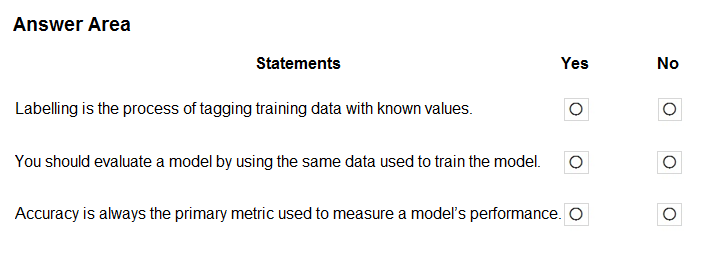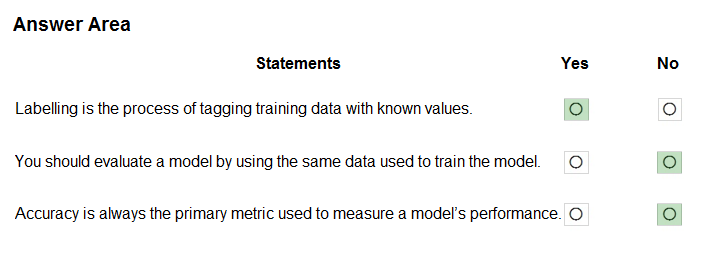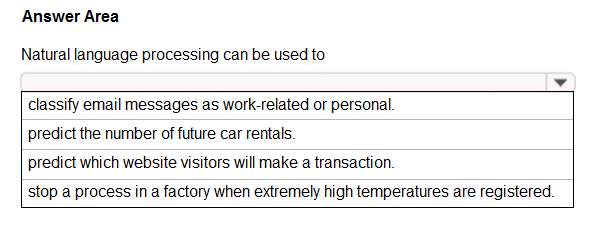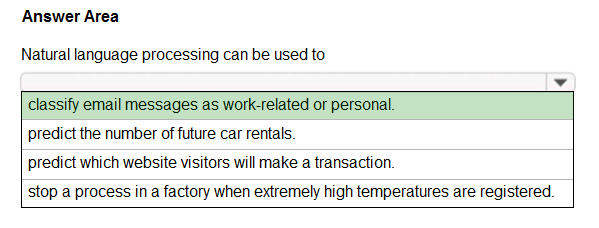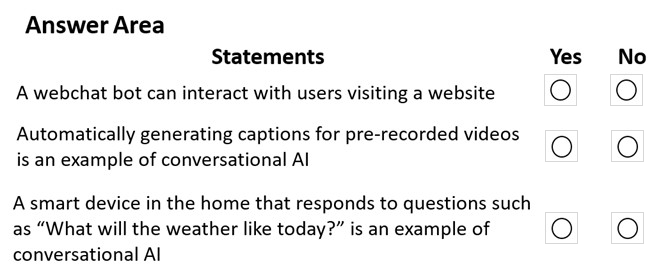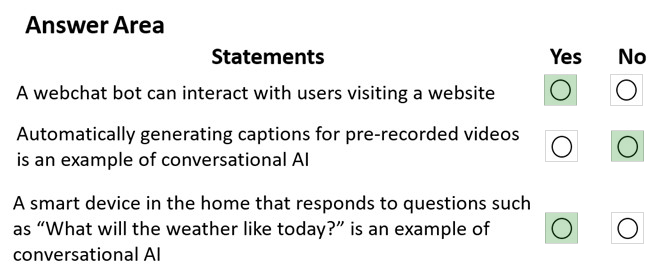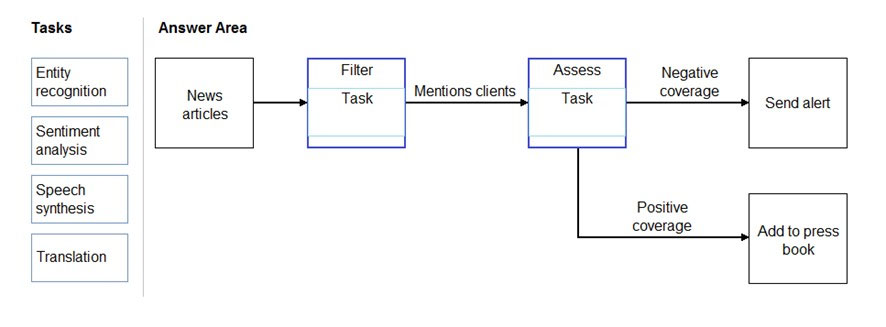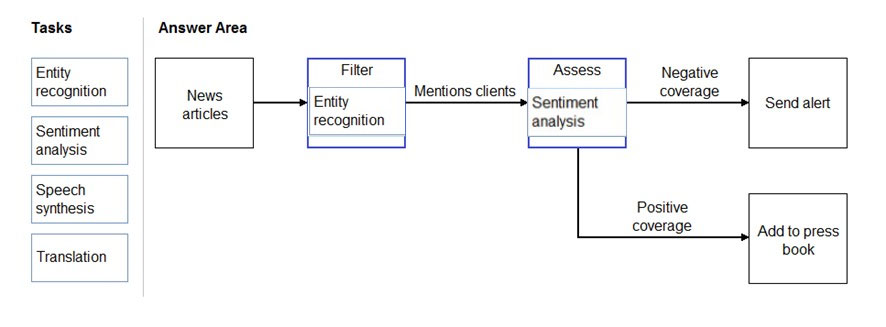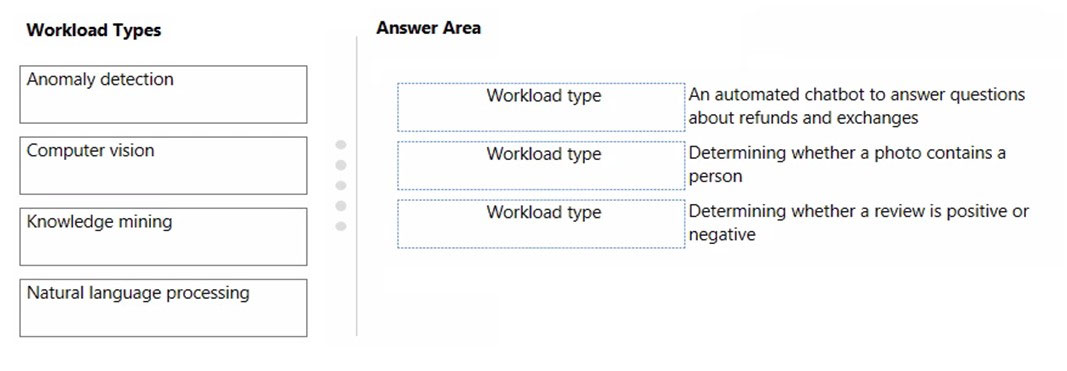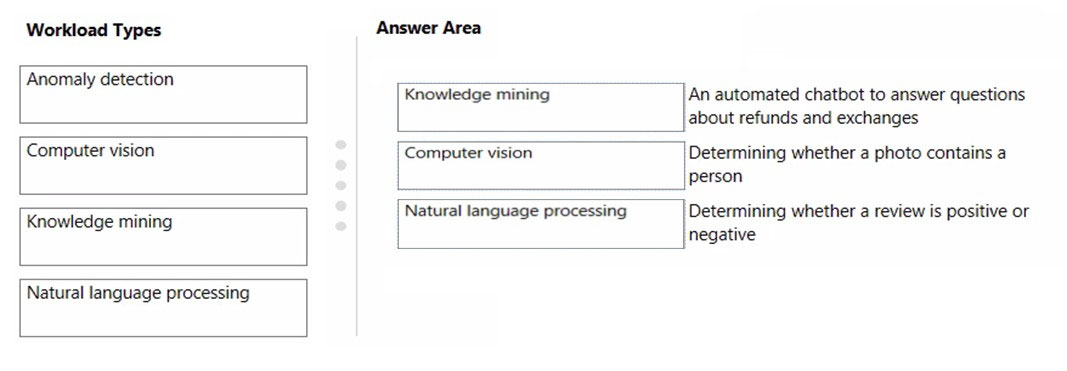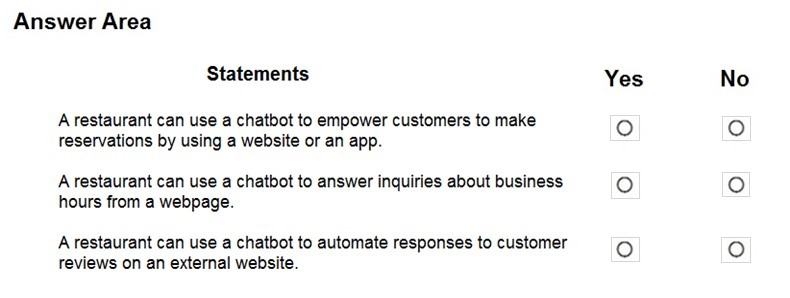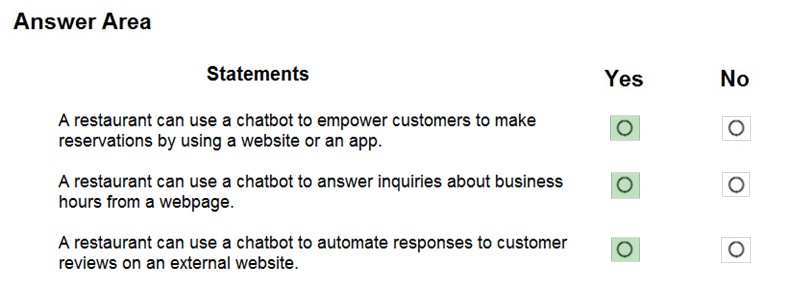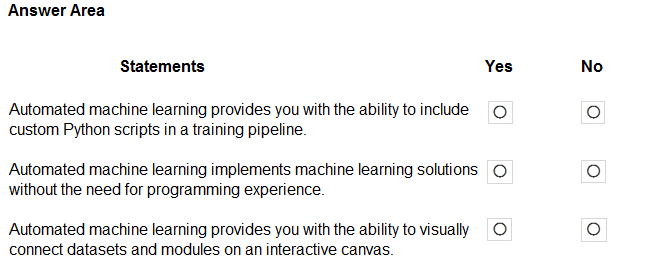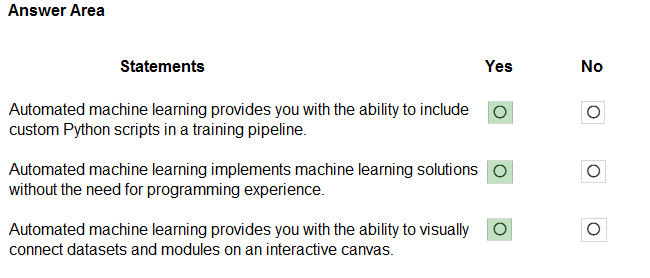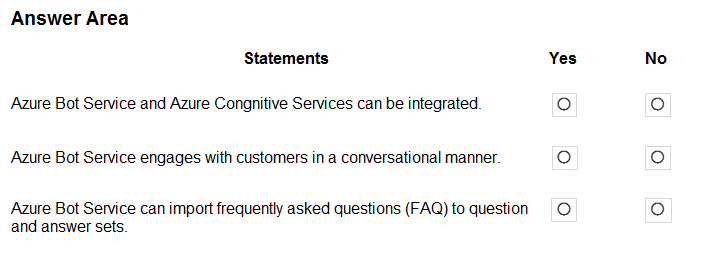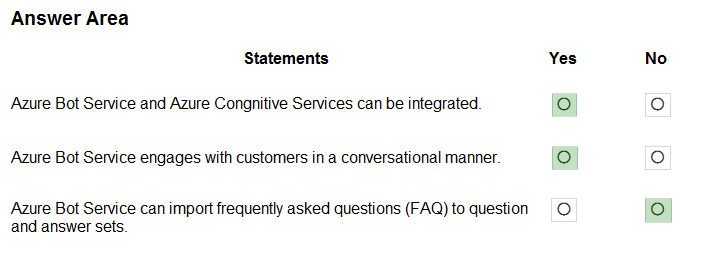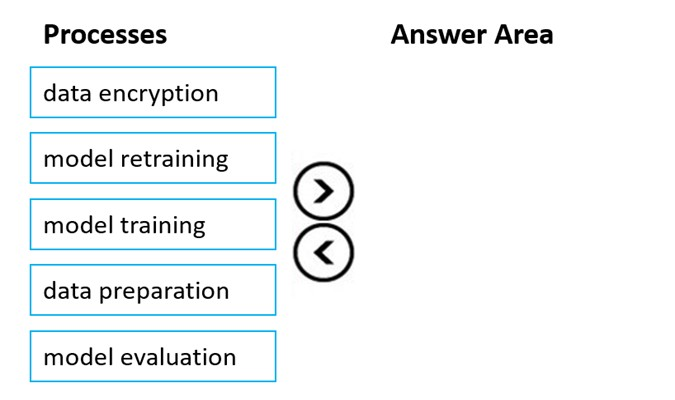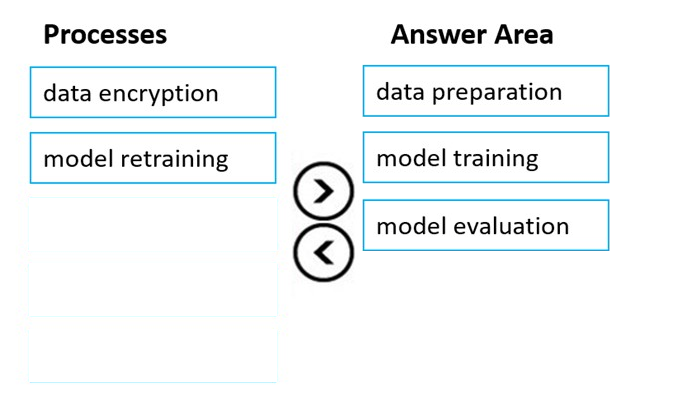AI-900 Practice Test Free – 50 Real Exam Questions to Boost Your Confidence
Preparing for the AI-900 exam? Start with our AI-900 Practice Test Free – a set of 50 high-quality, exam-style questions crafted to help you assess your knowledge and improve your chances of passing on the first try.
Taking a AI-900 practice test free is one of the smartest ways to:
- Get familiar with the real exam format and question types
- Evaluate your strengths and spot knowledge gaps
- Gain the confidence you need to succeed on exam day
Below, you will find 50 free AI-900 practice questions to help you prepare for the exam. These questions are designed to reflect the real exam structure and difficulty level. You can click on each Question to explore the details.
HOTSPOT - For each of the following statements, select Yes if the statement is true. Otherwise, select No. NOTE: Each correct selection is worth one point. Hot Area:
HOTSPOT - For each of the following statements, select Yes if the statement is true. Otherwise, select No. NOTE: Each correct selection is worth one point. Hot Area:
You need to convert handwritten notes into digital text. Which type of computer vision should you use?
A. facial detection
B. optical character recognition (OCR)
C. image classification
D. object detection
You use natural language processing to process text from a Microsoft news story. You receive the output shown in the following exhibit.Which type of natural languages processing was performed?
A. entity recognition
B. key phrase extraction
C. sentiment analysis
D. translation
HOTSPOT - For each of the following statements, select Yes if the statement is true. Otherwise, select No. NOTE: Each correct selection is worth one point.
DRAG DROP - Match the types of AI workloads to the appropriate scenarios. To answer, drag the appropriate workload type from the column on the left to its scenario on the right. Each workload type may be used once, more than once, or not at all. NOTE: Each correct selection is worth one point. Select and Place:
HOTSPOT - Select the answer that correctly completes the sentence.
In which two scenarios can you use the Form Recognizer service? Each correct answer presents a complete solution. NOTE: Each correct selection is worth one point.
A. Identify the retailer from a receipt
B. Translate from French to English
C. Extract the invoice number from an invoice
D. Find images of products in a catalog
DRAG DROP - You plan to deploy an Azure Machine Learning model by using the Machine Learning designer. Which four actions should you perform in sequence? To answer, move the appropriate actions from the list of actions to the answer area and arrange them in the correct order.
In a machine learning model, the data that is used as inputs are called ________. Select the answer that correctly completes the sentence.
A. dataset
B. labels
C. variables
You plan to build a conversational AI solution that can be surfaced in Microsoft Teams, Microsoft Cortana, and Amazon Alexa. Which service should you use?
A. Azure Bot Service
B. Azure Cognitive Search
C. Speech
D. Language service
You need to predict the income range of a given customer by using the following dataset.Which two fields should you use as features? Each correct answer presents a complete solution. NOTE: Each correct selection is worth one point.
A. Education Level
B. Last Name
C. Age
D. Income Range
E. First Name
You need to create a model that labels a collection of your personal digital photographs. Which Azure Cognitive Services service should you use?
A. Form Recognizer
B. Custom Vision
C. Language
D. Computer Vision
HOTSPOT - Select the answer that correctly completes the sentence. Hot Area:
DRAG DROP - You are designing a system that will generate insurance quotes automatically. Match the Microsoft responsible AI principles to the appropriate requirements. To answer, drag the appropriate principle from the column on the left to its requirement on the right. Each principle may be used once, more than once, or not at all. NOTE: Each correct match is worth one point.
HOTSPOT - To complete the sentence, select the appropriate option in the answer area. Hot Area:
You have an Azure Machine Learning pipeline that contains a Split Data module. The Split Data module outputs to a Train Model module and a Score Model module. What is the function of the Split Data module?
A. scaling numeric variables so that they are within a consistent numeric range
B. creating training and validation datasets
C. diverting records that have missing data
D. selecting columns that must be included in the model
HOTSPOT - For each of the following statements, select Yes if the statement is true. Otherwise, select No. NOTE: Each correct selection is worth one point. Hot Area:
Which Computer Vision feature can you use to generate automatic captions for digital photographs?
A. Recognize text.
B. Identify the areas of interest.
C. Detect objects.
D. Describe the images.
You are developing a natural language processing solution in Azure. The solution will analyze customer reviews and determine how positive or negative each review is. This is an example of which type of natural language processing workload?
A. language detection
B. sentiment analysis
C. key phrase extraction
D. entity recognition
DRAG DROP - Match the machine learning tasks to the appropriate scenarios. To answer, drag the appropriate task from the column on the left to its scenario on the right. Each task may be used once, more than once, or not at all. NOTE: Each correct selection is worth one point. Select and Place:
HOTSPOT - To complete the sentence, select the appropriate option in the answer area. Hot Area:
You are authoring a Language Understanding (LUIS) application to support a music festival. You want users to be able to ask questions about scheduled shows, such as: `Which act is playing on the main stage?` The question `Which act is playing on the main stage?` is an example of which type of element?
A. an intent
B. an utterance
C. a domain
D. an entity
DRAG DROP - You need to scan the news for articles about your customers and alert employees when there is a negative article. Positive articles must be added to a press book. Which natural language processing tasks should you use to complete the process? To answer, drag the appropriate tasks to the correct locations. Each task may be used once, more than once, or not at all. You may need to drag the split bar between panes or scroll to view content. NOTE: Each correct selection is worth one point. Select and Place:
DRAG DROP - Match the types of AI workloads to the appropriate scenarios. To answer, drag the appropriate workload type from the column on the left to its scenario on the right. Each workload type may be used once, more than once, or not at all. NOTE: Each correct selection is worth one point. Select and Place:
You have 100 instructional videos that do NOT contain any audio. Each instructional video has a script. You need to generate a narration audio file for each video based on the script. Which type of workload should you use?
A. language modeling
B. speech recognition
C. speech synthesis
D. translation
Your company manufactures widgets. You have 1,000 digital photos of the widgets. You need to identify the location of the widgets within the photos. What should you use?
A. Computer Vision Spatial Analysis
B. Custom Vision object detection
C. Computer Vision Image Analysis
D. Custom Vision classification
A smart device that responds to the question “What is the stock price of Contoso. Ltd.?” is an example of which AI workload?
A. knowledge mining
B. natural language processing
C. computer vision
D. anomaly detection
You need to develop a mobile app for employees to scan and store their expenses while travelling. Which type of computer vision should you use?
A. semantic segmentation
B. image classification
C. object detection
D. optical character recognition (OCR)
Which two languages can you use to write custom code for Azure Machine Learning designer? Each correct answer presents a complete solution. NOTE: Each correct selection is worth one point.
A. Python
B. R
C. C#
D. Scala
You need to predict the sea level in meters for the next 10 years. Which type of machine learning should you use?
A. classification
B. regression
C. clustering
HOTSPOT - For each of the following statements, select Yes if the statement is true. Otherwise, select No. NOTE: Each correct selection is worth one point. Hot Area:
DRAG DROP - Match the types of machine learning to the appropriate scenarios. To answer, drag the appropriate machine learning type from the column on the left to its scenario on the right. Each machine learning type may be used once, more than once, or not at all. NOTE: Each correct selection is worth one point. Select and Place:
Which two actions are performed during the data ingestion and data preparation stage of an Azure Machine Learning process? Each correct answer presents part of the solution. NOTE: Each correct selection is worth one point.
A. Calculate the accuracy of the model.
B. Score test data by using the model.
C. Combine multiple datasets.
D. Use the model for real-time predictions.
E. Remove records that have missing values.
You need to build an app that will read recipe instructions aloud to support users who have reduced vision. Which version service should you use?
A. Text Analytics
B. Translator
C. Speech
D. Language Understanding (LUIS)
In which two scenarios can you use a speech synthesis solution? Each correct answer presents a complete solution. NOTE: Each correct selection is worth one point.
A. an automated voice that reads back a credit card number entered into a telephone by using a numeric keypad
B. generating live captions for a news broadcast
C. extracting key phrases from the audio recording of a meeting
D. an AI character in a computer game that speaks audibly to a player
For a machine learning progress, how should you split data for training and evaluation?
A. Use features for training and labels for evaluation.
B. Randomly split the data into rows for training and rows for evaluation.
C. Use labels for training and features for evaluation.
D. Randomly split the data into columns for training and columns for evaluation.
You are designing an AI system that empowers everyone, including people who have hearing, visual, and other impairments. This is an example of which Microsoft guiding principle for responsible AI?
A. fairness
B. inclusiveness
C. reliability and safety
D. accountability
Which AI service can you use to interpret the meaning of a user input such as `Call me back later?`
A. Translator
B. Text Analytics
C. Speech
D. Language Understanding (LUIS)
You have a solution that reads manuscripts in different languages and categorizes the manuscripts based on topic. Which types of natural language processing (NLP) workloads does the solution use?
A. speech recognition and entity recognition
B. speech recognition and language modeling
C. translation and key phrase extraction
D. translation and sentiment analysis
HOTSPOT - Select the answer that correctly completes the sentence.
HOTSPOT - For each of the following statements, select Yes if the statement is true. Otherwise, select No. NOTE: Each correct selection is worth one point. Hot Area:
HOTSPOT - Select the answer that correctly completes the sentence.
HOTSPOT - For each of the following statements, select Yes if the statement is true. Otherwise, select No. NOTE: Each correct selection is worth one point. Hot Area:
HOTSPOT - For each of the following statements, select Yes if the statement is true. Otherwise, select No. NOTE: Each correct selection is worth one point.
You have the process shown in the following exhibit.Which type of AI solution is shown in the diagram?
A. a sentiment analysis solution
B. a chatbot
C. a machine learning model
D. a computer vision application
Which machine learning technique can be used for anomaly detection?
A. A machine learning technique that classifies objects based on user supplied images.
B. A machine learning technique that understands written and spoken language.
C. A machine learning technique that classifies images based on their contents.
D. A machine learning technique that analyzes data over time and identifies unusual changes.
DRAG DROP - You plan to deploy an Azure Machine Learning model as a service that will be used by client applications. Which three processes should you perform in sequence before you deploy the model? To answer, move the appropriate processes from the list of processes to the answer area and arrange them in the correct order. Select and Place:
HOTSPOT - For each of the following statements, select Yes if the statement is true. Otherwise, select No. NOTE: Each correct selection is worth one point.
Which scenario is an example of a webchat bot?
A. Determine whether reviews entered on a website for a concert are positive or negative, and then add a thumbs up or thumbs down emoji to the reviews.
B. Translate into English questions entered by customers at a kiosk so that the appropriate person can call the customers back.
C. Accept questions through email, and then route the email messages to the correct person based on the content of the message.
D. From a website interface, answer common questions about scheduled events and ticket purchases for a music festival.
Free Access Full AI-900 Practice Test Free Questions
If you’re looking for more AI-900 practice test free questions, click here to access the full AI-900 practice test.
We regularly update this page with new practice questions, so be sure to check back frequently.
Good luck with your AI-900 certification journey!




